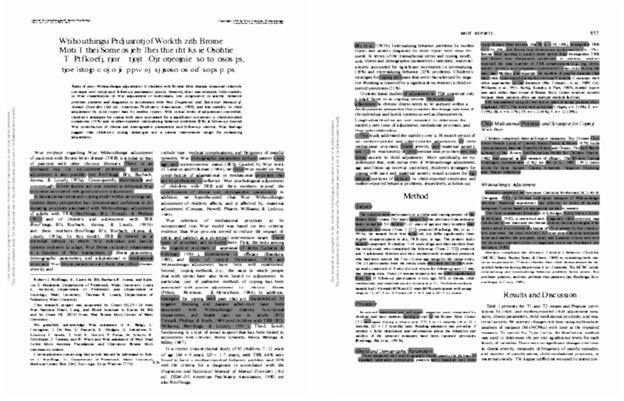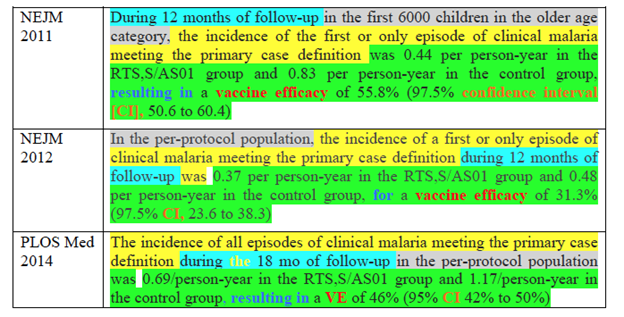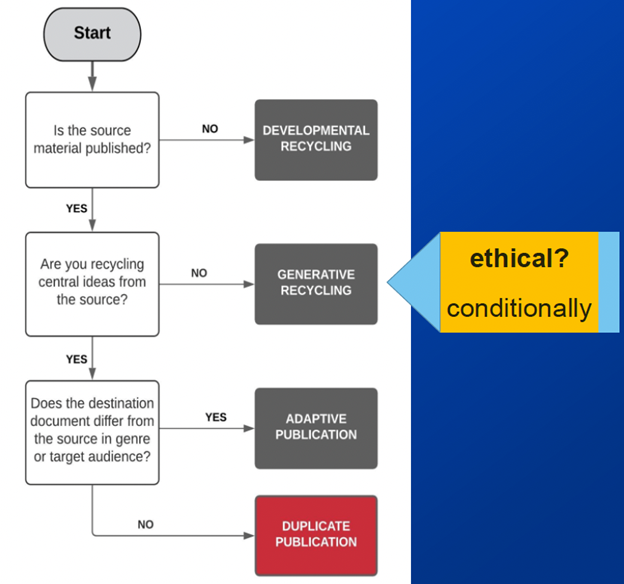MODERATOR:
Kelly Hadsell
Federation of State Medical Boards
SPEAKERS:
Cary Moskovitz
Duke University
David Hansen
Authors Alliance
@DigLibCopyright
REPORTER:
Ruth Isaacson
Genetics Society of America
Text recycling has long been a source of confusion for researchers, editors, and publishers and is inappropriately regarded as a form of self-plagiarism. To provide clarity regarding text recycling and consensus about what is ethically and legally acceptable, the Text Recycling Research Project1 (TRRP), a multi-institution, NSF-funded initiative, investigates text recycling in STEM research. TRRP members Cary Moskovitz and David Hansen shared some of the TRRP findings and recommendations.
TRRP’s definition of text recycling is as follows:
Text Recycling is the reuse of textual material (prose, visuals, or equations) in a new document where (1) the material in the new document is identical to that of the source (or substantively equivalent in both form and content), (2) the material is not presented in the new document as a quotation (via quotation marks or block indentation), and (3) at least one author of the new document is also an author of the prior document.2
Moskovitz explained that in publishing, editors often ask authors to rework their materials in 1 of 3 ways to avoid ethical and legal concerns. While on the surface these appear to be reasonable approaches, Moskovitz detailed why text recycling is often more appropriate.
Summarize and Cite
Editors may ask authors to paraphrase and cite text when it is recycled from a large block of text. However, when documents are behind paywalls, this limits access to the original text, and readers lack necessary information that could have been recycled from the original source.
Quote
Editors may ask authors to quote the original work. Placing text in quotation marks places unnecessary emphasis on the words used and should be reserved for content that authors want to highlight, particularly text from different authors. Text recycling is also rarely limited to one concise passage but is often fragments of text as shown in the highlighted portions of Figure 1. Quotation marks in these cases would be highly inappropriate and distracting.

Reword
Editors may ask authors to reword the text that is being recycled. There are limited ways (especially in the materials and methods section) to reword something and in the case of a non-native English speaker, creates additional linguistic challenges. Yet, authors and editors fall back to this tactic frequently. Figure 2 shows an example of 3 papers from the same author group with rewording; such changes make it more difficult for readers to clearly understand what has changed and what is the same between the papers.

Understanding the different types of text recycling could help editors and other stakeholders understand when text recycling is appropriate. Moskovitz and Hansen shared that the terms duplicate publication, redundant publication, self-plagiarism, and text recycling are used with different meanings by different organizations. To help stakeholders distinguish between types of text recycling, the TRRP has developed a new taxonomy3 (Figure 3).
- Developmental recycling: reuse of material from unpublished work; common and generally acceptable
- Generative recycling: reuse of portions of a previously published work in a new work that makes an original intellectual contribution; could be ethical or legal depending on circumstances
- Adaptive publication: republication of an entire document or the central part(s) but modified for the new context; ethical or legal depending on publisher permission and transparency with editors and readers
- Duplicate publication: publication of the same work and with the same genre, content, and intended audience as the previous document; considered unethical and likely illegal depending on copyright infringement or author-publisher agreements

These types of text recycling have varying levels of ethical and legal concerns. Hansen noted that within the United States and Canada, there exists no law about text recycling, and in most jurisdictions, no law addressing plagiarism. However, stakeholders express significant concerns about the legality of text recycling and conflate plagiarism with copyright violation.
One area of confusion is generative recycling where small portions of a previously published work are reused in a new work, such as in Figure 2. Because authors and publishers often have agreements in which the publisher holds copyright and the authors have received exclusive rights, the concern here is not plagiarism, but legal use within the copyright agreement. The fair use provision of U.S. copyright law provides the author with the exception for common types of reuse, but most publishers do not address text recycling in their agreements, and authors must read between the lines and guess as to whether their reuse violates copyright law or their signed contract. The TRRP encourages publishers to resolve this confusion by explicitly giving authors the legal right to recycle from their papers in future publications in plain English—so long as that reuse adheres to the TRRP Best Practices for Text Recycling or some other ethical recycling guidelines.
In addition to the suggestion for publishers, Moskovitz and Hansen shared the TRPP’s recent best practices for researchers:4
- Authors should recycle text where consistency of language is needed for accurate communication.
- Authors may recycle text so long as the recycled material is accurate and appropriate for the new work and does not infringe copyright or violate publisher policies.
- Authors should be careful not to recycle text in ways that might mislead readers or editors about the novelty of the new work.
Moskovitz stressed that the word “should” in the first recommendation was chosen with a lot of deliberation. If keeping the language the same between the original source and new work results in better communication and consistency, authors should choose this route. Transparency is also important, and rather than make superficial changes that could reduce clarity or mislead readers, authors should be upfront about if text has been reused.
To recycle text legally, the TRRP recommends the following:
- For most unpublished work (unpublished research manuscripts, preprints, grant proposals, conference posters, etc.), authors hold copyright and thus can recycle from that work without legal restriction. (Note: Under “work-for-hire” arrangements, authors do not hold copyright.)
- Most publishers require authors to transfer copyright to the publisher. Authors’ rights to recycle from their own published works are then limited by copyright laws, which differ by country.
- Publication contracts may, however, let authors retain some rights to recycle. These rights are contract-specific and differ markedly across publishers. Authors should know what their signed contract allows.
If the amount or type of recycling exceeds what copyright law and the signed contract allows, authors should obtain permission from the publisher of the source document.
To recycle text ethically, the TRRP recommends the following:
- Authors should be transparent with editors, informing them about the presence of recycled material upon submission.
- Authors should be transparent with readers by including a statement notifying readers that the document contains recycled material.
- If the authors of the new work are not identical to those of the prior work, the corresponding author of the new work should obtain permissions as reasonably possible.
Hansen emphasized that in cases where the use may exceed what copyright law or the contract allows, it’s best to ask authors to obtain permission rather than rewrite text. If the original source they coauthored has authors who are not on this new work, they should obtain permission from the lead or corresponding author instead of all authors, as this still shows good faith intent.
Having shared these examples and resources, Moskovitz and Hansen summed up their presentation with this statement. “If authors and editors agree that certain amounts of text recycling are appropriate and good for scientific communication, then the law should not be a barrier.”
References and Links
- https://textrecycling.org/
- Hall S, Moskovitz C, Pemberton M. Understanding text recycling: a guide for editors. Text Recycling Research Project. 2021. [accessed May 15, 2023]. https://textrecycling.org/files/2021/06/Understanding-Text-Recycling_A-Guide-for-Editors-V.1.pdf
- Moskovitz, C., Standardizing terminology for text recycling in research writing. Learned Publ. 2021;34:370–378. https://doi.org/10.1002/leap.1372
- Hall S, Moskovitz C, Pemberton M. Text recycling. TRRP best practices for researchers. Text Recycling Research Project. 2021. [accessed May 15, 2023]. https://textrecycling.org/resources/best-practices-for-researchers
